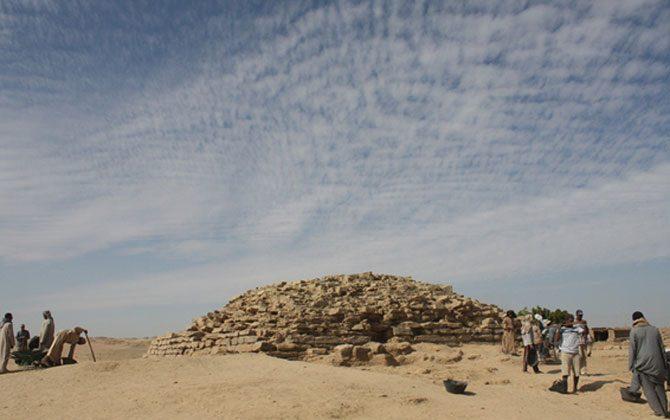An Egypt pyramid uncovered recently dates back about 4,600 years, predating the Great Pyramid of Giza by at least a few decades.
The step pyramid once stood as high as 43 feet and researchers say that it is one of seven pyramids built by either the pharaoh Huni, who reigned from 2635 B.C., or Snefru, who reigned from 2610 B.C. to 2590 B.C.
The pyramid is only 16 feet tall today because of weathering and pillaging, reported Discovery News.
The seven pyramids are scattered throughout southern and central Egypt and distinctly have no internal chambers, meaning that they weren’t for burial.
Six of the seven have almost identical dimensions, including the newly found one.
The purpose of all seven is a mystery to researchers.
Gregory Marouard, a research associate at the University of Chicago’s Oriental Institute who led the work at the Edfu pyramid, said that his team found evidence that offerings of food were made on the east side of the pyramid.
Before Marouard’s team started excavating the structure, it didn’t look like a pyramid, and some local residents thought that it was the tomb of a shiekh, or a local Muslim saint.
The pyramid was built of sandstone blocks and clay mortar.
“The construction itself reflects a certain care and a real expertise in the mastery of stone construction, especially for the adjustment of the most important blocks,” said Marouard in his paper, which was presented at a recent symposuim.






Friends Read Free